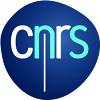Documents
The IRN intends to gather four teams:
- Geometry (algebraic and analytic)
- Number theory (arithmetic and geometric)
- PDE (kinetic theory and collective dynamics)
- Probability
The scientific program of the team in Geometry:
The scientific program of the team in Number Theory:
The scientific program of the team in PDE:
The scientific program of the team in Probability:

